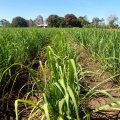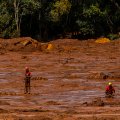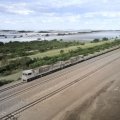Increased remote-operation of mine sites from city-based control centres could lead to fewer jobs and less economic activity in mining regions, a new report has found.
The report, from The University of Queensland’s Centre for Social Responsibility in Mining (CSRM), found that the increasing automation of mining tasks – such as driverless trains and haul trucks - can provide safety and efficiency, but also is likely to result in the loss of on-site jobs.
The report comes just months after BHP Billiton opened an automation centre, allowing employees to operate its Pilbara mines from Perth. Rio Tinto is already operating a similar centre for its iron ore operations.
Professor David Brereton, Deputy Director of Research and Integration at the UQ Sustainable Minerals Institute (SMI) and leader of the Mineral Futures Collaboration Cluster said responsible mining companies could not afford to ignore the potential social impacts of large-scale automation.
“While the large-scale uptake of automation will improve efficiency and create a safer, more attractive working environment, a reduction in on-site roles is likely to reduce economic activity in the local and regional area, and could lead to a loss of population and services over the longer term,” said Professor Brereton.
Particularly at risk are Aboriginal Australians in remote communities who have previously benefited from employment and business development opportunities provided by mining companies, he said.
“A growing number of major mining companies have made both voluntary and binding commitments to promote Aboriginal training, employment and business development.
“However, many of the entry-level jobs currently held by Aboriginal workers in the mining industry are likely to disappear as automation and remote operation becomes more widespread,” Professor Brereton said.
Some Australian mines are already operating fully autonomous haul trucks, with advanced plans to develop remote control blast-hole drills, tele-remote rock breakers, driverless ore trains and tele-remote ship loaders.
The Social Dimensions of Autonomous and Remote Operation Mining report summarises a three-year study conducted by CSRM and the Minerals Industry Safety and Health Centre (MISHC), both within the UQ Sustainable Minerals Institute.
The report is one of the outputs of the Mineral Futures Collaboration Cluster, a research program funded by CSIRO and developed by five Australian universities.
The report makes recommendations to government and industry about how to address the potential social impacts and opportunities of technological change. A key conclusion was the need for a more strategic approach to developing and rolling out autonomous and remote operations in Australian mining.
Professor Brereton said collaboration was necessary to prepare regional economies, employees and other stakeholders for this change.
“A positive step would be for industry and government to work together on a strategic impact assessment. This could help to quantify the implications for the workforce and regional economies, and make for a smoother transition,” he said.
“This is not about slowing the pace of technological change. Experience has shown that such attempts rarely, if ever, succeed. But we should be working to ensure that the benefits of innovation are broadly distributed and that people living in regional and remote Australia aren’t disadvantaged.”
The report highlights opportunities for the Commonwealth Government and state governments to plan for the potential impacts of technology-induced workforce changes in the mining industry.
“As a provider of education and training, governments have an important role to play in equipping current and future workforces for this new operating environment,” Professor Brereton said.
For the full report, click here.
Media Contact: Keziah Radke, Centre for Social Responsibility in Mining, 07 0466 825 866 or k.radke@uq.edu.au






_1 620W.jpg?itok=y7rQ1CJX)




